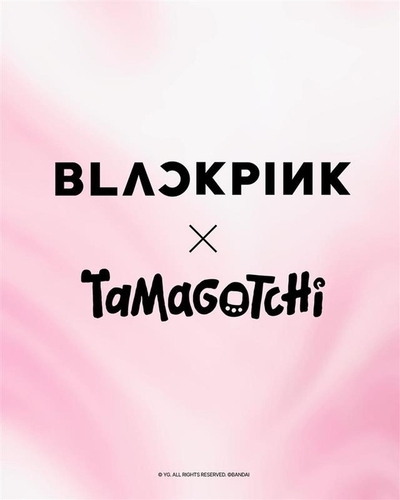[WHY] Ever-expanding idol groups have some asking how many is too many?
"With this many members, surely one of them must be your type."
This has become a widely used phrase among K-pop fans as the number of members in an idol group has been steadily increasing.
Somewhere around five members used to be the standard for K-pop idol groups in the first and second generation, which debuted between the late 1990s and early 2010s. Nowadays, however, the majority of idol groups debut with six or seven members at least. Notable acts that debuted in the past two years include six-member groups STAYC, P1Harmony, Ive; seven-member Enhypen, Billlie, Ciipher, Nmixx, Tempest; eight-member Lightsum; nine-member Kep1er, T1419; 11-member Omega X and 12-member Treasure.
Apart from a few acts like four-member girl groups Blackpink and aespa, bigger groups seem to be what's trending in K-pop. Large groups of over 10 members, which once raised eyebrows, are no longer a rarity — the largest K-pop group currently has 23 members.
How did K-pop groups get so large?

Member composition was rather compact in early K-pop groups. H.O.T., considered to be the first K-pop boy band as we know them today, debuted with five members in 1996. S.E.S., the first K-pop idol girl group, debuted with three members in 1997. They were followed by more first-generation idol acts such as four-member girl group Fin.K.L, five-member boy band g.o.d and five-member girl group Baby V.O.X. Groups of over five members, like boy bands Shinwha and Sechs Kies, were rare.
The standard formula of five carried on into the second generation of K-pop idols, referring to groups that debuted between the mid-2000s and early 2010s. Most groups — such as TVXQ, SS501, Big Bang, Wonder Girls, Kara, FTIsland, SHINee, f(x) — started out with five members, give or take a couple. Although boy band Super Junior did debut as a 12-member team in 2005, it was initially meant to be a project group active for three months only and thus considered an exceptional case.

When nine-member Girls' Generation debuted in 2007, the number of members in the girl group was a hot topic. Naming all nine members of the group served as a sort of test to prove how "up-to-date" a person was. Girls' Generation produced a series of megahits and expanded its fan base through television appearances on various shows by each member, proving the large group strategy to be effective.
Afterward, the trend of supersized groups came into full swing in 2012 when boy band Exo surprised many K-pop fans by debuting with 12 members. Super Junior also had 12 members, but Exo officially debuted as a permanent act, not intended to be a temporary project. When Exo debuted, many fans expressed curiosity about logistical aspects, ranging from how the vocals of a song would be distributed to how all twelve members would fit on stage. But after Exo proved successful and popularized the saying "one of them must be your type," the idea of presenting many members became widely accepted.

"They didn't know what people would like, so they just prepared everything," K-pop listeners jokingly reason as to why agencies started putting in as many members as possible. In the flood of idol groups, catching the eye of the public and turning them into fans has become a serious competition. Therefore, appealing to the widest range of fans possible by catering to diversified personal tastes is key. More members mean more different "types" that can attract fans, whether it's in terms of looks or personality shown through TV and YouTube content. Interest in one member usually leads to becoming a fan of the entire group, or "all fan" in K-pop lingo, which is beneficial for the team as a whole. After 13-member boy band Seventeen debuted in 2015, groups with over a dozen members no longer came as a surprise to the public.
How did foreign members join the mix?

More groups of over 10 members followed: WJSN, and Pentagon, The Boyz, Loona and Cherry Bullet between 2016 and 2019, all including non-Korean members. K-pop going global, leading agencies to add in foreign members, was another factor behind the increase of group members. The genre's rise in international popularity means idol groups have an ever-growing range of not only Korean fans but also foreign audiences to cater to.
One way to become more relatable to non-Korean K-pop fans is to have non-Korean members in the group — the earliest examples being Thai-American member Nichkhun of 2PM in 2008, and Chinese members Fei and Jia of Miss A in 2010.
"As the foreign market became increasingly important for K-pop idols, there has been a growing need to satisfy fans from many different nations and cultures," a K-pop agency insider who wished to remain anonymous told the Korea JoongAng Daily. "That has led agencies to add members that can appeal to different cultures — usually members from those countries. Such additions to have more diversity in K-pop groups naturally resulted in the overall increase of members."

Nowadays, it is difficult to find groups that solely consist of Korean members. Thai members Bambam of GOT7 and Lisa of Blackpink, Japanese members Sana, Momo and Mina of Twice and Yuta of NCT, Chinese members Victoria of f(x), Cheng Xiao, Meiqi, and Xuanyi of WJSN and many more foreign K-pop stars have contributed to their groups' popularity in their home countries.
As of now, the largest K-pop group is 23-member boy band NCT, which started with six members in 2016 and has continued adding members ever since. Even the band's smaller subunits have seven to 10 members and have been able to build global fandoms in Korea, Japan and China.
What's up with audition shows?

While SM Entertainment — which produced Super Junior, Girls' Generation, Exo and NCT — are considered to have led the way experimenting with larger and larger groups, idol audition shows are another contributing factor. Some of the best-known examples are I.O.I, Wanna One, IZ*ONE and X1, each comprised of eleven to twelve finalists from each season of Mnet's hit audition show franchise "Produce" (2017-2019).

JTBC's "YG Treasure Box" (2018-19) held in collaboration with K-pop powerhouse YG Entertainment produced 12-member boy band Treasure. Seven-member boy band Enhypen was formed by Mnet's audition show "I-Land" (2020), and 9-member girl group Kep1er was also formed by Mnet's "Girls Planet 999" (2021). Since the finalists have already made themselves familiar to viewers through the TV programs, audition-made groups have the advantage of already being known to the public prior to their official debuts.
What do fans think?

Large groups, especially those that set a new record for having the most members, have initially been met with shock, ridicule, or complaints that it is difficult to remember all the members' names. Nonetheless, after a group secures a fan base through quality music and performances, fans not only accept the group's size but use it as a source of humor.
A viral tweet posted on March 19 reads, "Seventeen members have 364 teeth combined. It would take a year to count one tooth a day." The seemingly nonsensical joke has been retweeted 13,200 times as of Tuesday and sees the boy band's fans bonding over poking fun at the group's size. An Ilgan Sports photo article of Seventeen also went viral as an online meme even among non-fans last year for its humorous headline, "Seventeen has more members than you have friends."

Similar fandom culture exists among NCT fans. A large amount of fan-made memes and posts by fans joke about the group's size. "NCT is the only K-pop group that can play a whole football game by itself, with two teams of 11 and one serving as the referee," a viral fan post reads. Although fans express concerns that the group has already become excessively large, the fandom seems to have accepted the large number of members as a unique characteristic of the band.
Some enjoy the elaborate choreography formations that large groups can achieve. K-pop idols are already known for their intricate dance moves and the choreography can be even more visually entertaining with a big group. Groups Exo, WJSN, The Boyz and IZ*ONE have received praise for formation dances that make good use of their numbers. NCT's group choreography with all 18 members it had back in 2018 still remains a fan favorite.

However, some point out that a large number of members tends to lead to fighting within a fandom over how many lines a member gets in a song. Some members of large groups often get to sing only a few seconds of individual parts, much to the dismay of individual members' fans who end up feeling disdain toward other members who get more lines or screen time. Now with YouTube channels that analyze an idol song's line distribution through detailed pie charts, overly disproportionate distribution remains a point of frequent contention within fandoms.
K-pop idol groups are unlikely to downsize any time soon, as seen in this year's lineup of upcoming acts. Girl group CLASS:y, formed though MBC's audition show "My Teenage Girls" (2021-22) will debut with seven members in April; girl group ILY:1 with six also next month and boy band BLANK2Y with nine in the first half of 2022.
NCT's agency SM Entertainment has stated it plans to keep adding more members to the boy band of 23 with no certain limit. Idol audition shows, which tend to produce large groups of finalists, will also continue being popular as audition-made groups have proven successful.
"The more the merrier" seems to be the spirit of K-pop as of now.


BY HALEY YANG [yang.hyunjoo@joongang.co.kr]



